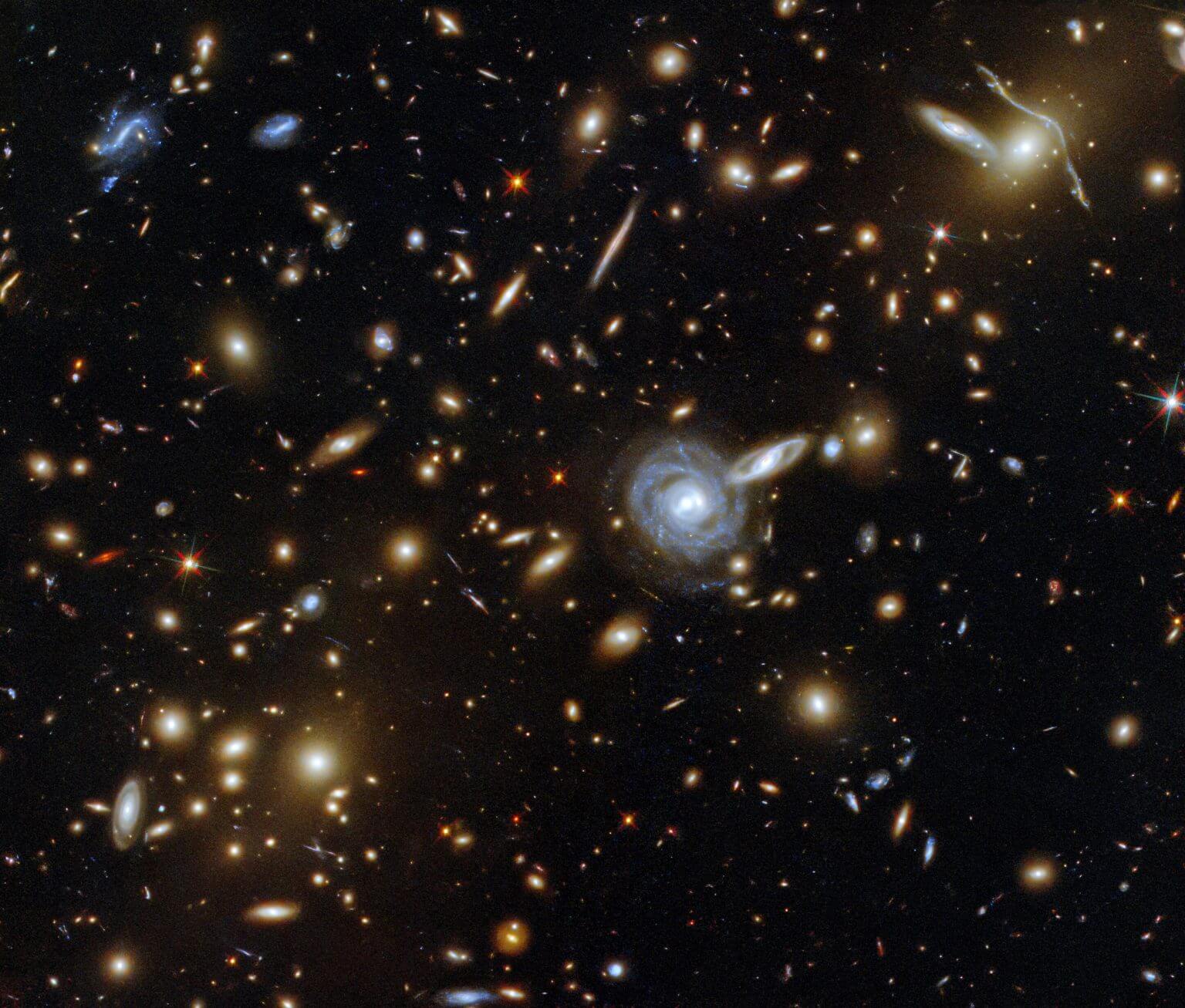This galactic cluster boasts a variety of directions, with spiral galaxies like the one in the center of this image that are almost visible from above, and some spiral galaxies that are only visible as thin slices of light when viewed from the side. This is in addition to the gravitational lensing effect that allows viewing more distant galaxies

This full Hubble Space Telescope image of the week shows the galaxy cluster ACO S 295, as well as a rich evening of background galaxies and foreground stars. Galaxies of all shapes and sizes populate this image, from magnificent spirals to fuzzy ellipticals. In addition to a variety of sizes, this galactic cluster boasts a variety of orientations, with spiral galaxies like the one in the center of this image that are almost visible from above, and some spiral galaxies that are only visible as thin slices of light when viewed from the side.
Gravitational lens effect
The cluster dominates the center of the image, both visually and physically. The huge mass of the galaxy cluster causes a gravitational lensing effect on the background galaxies, distorting and spreading their shapes. As well as being a natural magnifying glass for the study of distant galaxies, gravitational lenses subtly framed the center of the image, producing a visually stunning scene.
This image will join the Hubble Legacy, a project that brings together the most interesting and visually beautiful scientific images. The telescope is about to end its life and will be replaced (many years behind schedule) by the James Webb Space Telescope, except that it will observe less in visible light and more in infrared light, with the aim of capturing images of objects from the early universe that, due to the speed of their escape from us, have a large redshift.
Very distant galaxies are not only pale but also appear small in the sky. Astronomers would be happy to see how the star formation process developed within these galaxies. Such details are often beyond Hubble's ability to observe without the amplification made possible by the gravity of the objects in the way.
More of the topic in Hayadan:
- What are gravitational waves?
- A new record in the measurement of an ultra-weak gravitational field
- Astronomers have prepared the most comprehensive survey of nearby galaxies in the ultraviolet field with the help of Hubble
- The Hubble Space Telescope captured an amazing image of galaxies in the process of colliding
- The Hubble Space Telescope reveals: stars are born around black holes in the centers of galaxies
- Hubble celebrates 21 with the rose of the galaxies
- Hubble photographed a mysterious neighboring galaxy in a burst of star formation

9 תגובות
Hubble didn't imagine the universe could be fully captured with telescopes...
https://geniuses.club/genius/edwin-hubble
There is no such thing as purpose, certainly not for inanimate objects.
Except that a reference to a New Age movie doesn't make it real.
We study them, are impressed by them, try to give them meaning?
Can we say that galaxies have a purpose?
And if the answer is yes, what does that say about us?
Recommendation to watch:
https://www.youtube.com/watch?v=ugMuo0LUdeM
And it turns out that these galaxies have a purpose.
And if they have a purpose, may we one day discover that we too have a purpose?
Recommendation to watch:
https://www.youtube.com/watch?v=ugMuo0LUdeM
upset-
Too bad you don't learn something from time: be passive.
And where is the article detailing your insanity, nerf?
I am studying 5 units in physics and I did not understand your explanation in the article you attached
According to the article "the universe moves in infinite space..." but a universe cannot "move in infinite space..." because movement is a measure of time and space, and outside the universe, there is no space and no time. And in general there is no such thing "outside the universe" because the universe is by definition everything, therefore it is infinite.
On the other hand, if we assume that there is some definite space that contains all the galaxies, and has any limit, and it moves wherever it has any space, it is not the universe but a part of the universe.
A telescope will not be able to reveal the image of the entire universe.
The real picture of the universe is perceived only in the imagination.
The universe has the shape of a disk, moving in infinite space full of passive time, in a straight line, at a speed of 12C
The direction of the movement of the universe is the direction of the disk axis.
The shape of the disk is created by all the stars of the universe, moving in natural spiral orbits.
The movement of the stars is natural, and no force is needed to move them.
The motion of the stars is absolute, and absolute motion can only be observed by an imaginary observer, who is absolutely at rest.
The following article details the structure of the universe
http://img2.timg.co.il/forums/3/c8659042-cdd9-4060-b7fd-a3872d542a4b.pdf